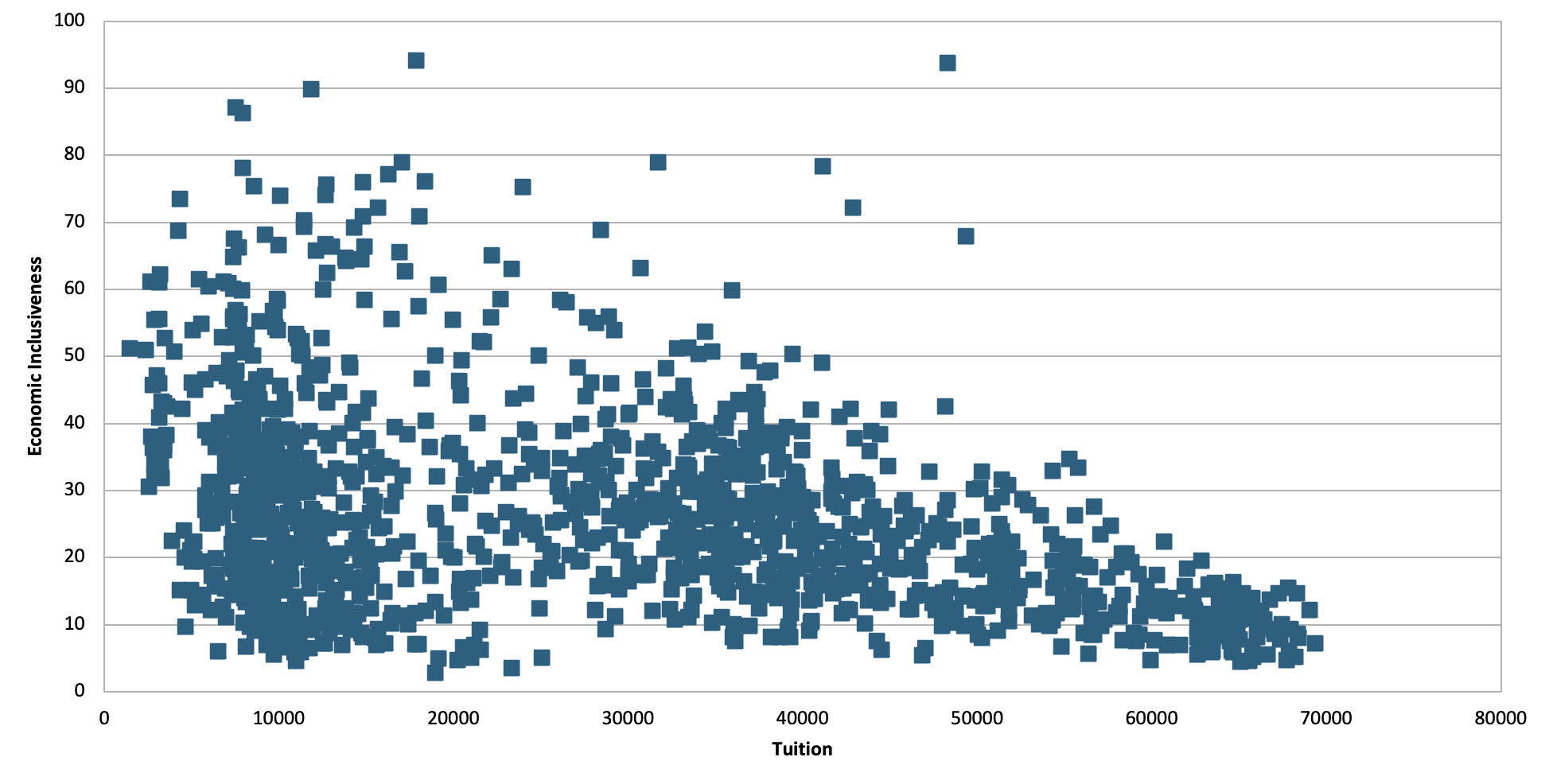| SMI | Institution | City | State | Ethos | Tuition | % Low Income | Grad Score | Median Early Career Salary | Average Debt | Endowment (in M) | % Freshman Pell | % Pell to rich 1/2 |
|---|---|---|---|---|---|---|---|---|---|---|---|---|
| SMI | Institution |
|---|
| Ave SMI Rank | State |
|---|


| Variable | Sensitivity |
|---|---|
| Economic Background | 201 |
| Ethos | 198 |
| Tuition | 192 |
| Graduation Rate | 114 |
| Early Career Salary | 114 |
| Endowment | 49 |
Data used in calculating SMI rankings are collected from third-party sources including the U.S. Dept of Education’s College Scorecard and IPEDS, in addition to college and university websites.
The relative weight of each variable we measure is established by testing how much a realistic change in the value of that variable moves a school within a set of rankings derived from real data. Accordingly, the greatest sensitivity for movement in the SMI rankings derives from lowering sticker tuition and increasing the percentage of students within the student body whose family incomes are less than or equal to $48,000 (the SMI “access” variables) while refraining from touting U.S. News & World Report rankings ("ethos" variable).
While ethos, tuition and economic background of the student body are the most sensitive variables in the SMI, three other variables in descending order of sensitivity are also critical. These are: graduation score, early career net salaries, and endowment. While capable of producing big movements, graduation rates and early career net salary (the SMI “outcome” variables) carry approximately 1/2 the sensitivity of the first three variables. The rationale for this is not only that ethos, tuition, and economic background are the most critical front-end drivers for access, they are also the three variables over which policy makers have almost 100 percent, decisive control. By contrast, graduation rates and early career net salaries, while strong enablers of economic mobility, are not necessarily useful indicators of mobility if they primarily describe outcomes for wealthier students.
In a similar way, early career salary is not necessarily an indicator of upward mobility. Just as students from richer families tend to have higher graduation rates, they also enjoy greater advantage with respect to landing higher paying jobs. Further, if two students from similar economic backgrounds graduate, yet one graduates with far less debt than the other, that student can enjoy much faster upward mobility. Consequently, we strengthen salary as an indicator of economic mobility by computing it “net” of the average yearly student debt service carried by the graduates of any given institution.
Finally, endowment carries 1/2 the sensitivity of the outcome variables. Although it is a strong indicator of the power to act, endowment works inversely in the SMI as a tiebreaker. The basic logic is that all things otherwise being equal in the SMI between school A and school B, if school A has lower endowment than school B, then school A is doing its work more efficiently. By virtue of its larger endowment, school B has untapped potential to do more to address social mobility and therefore will appear slightly lower in the rankings than school A.